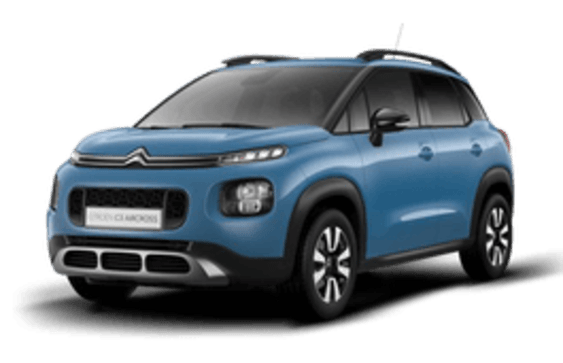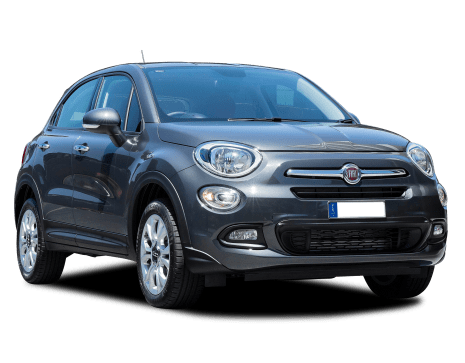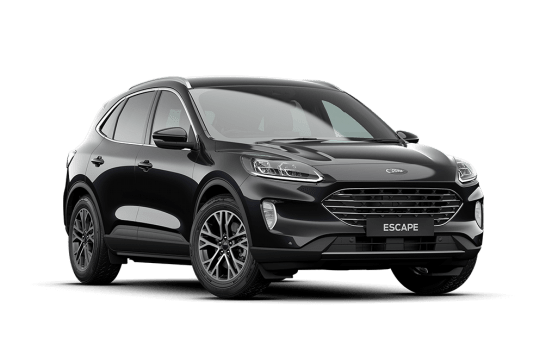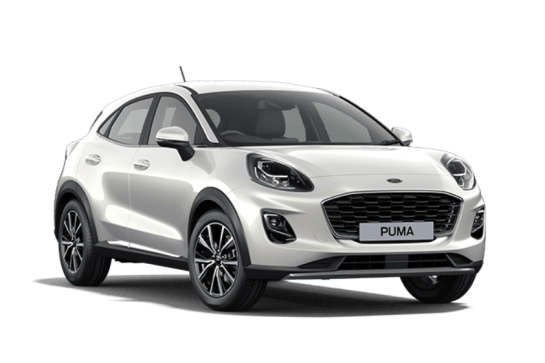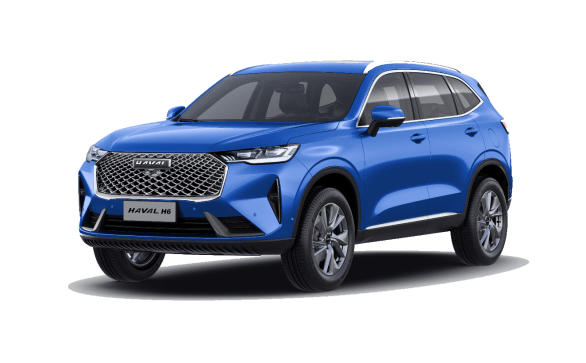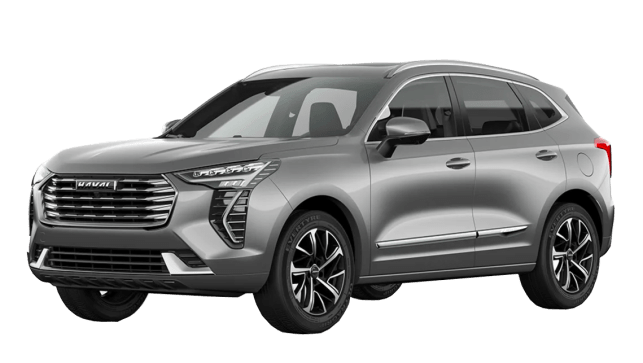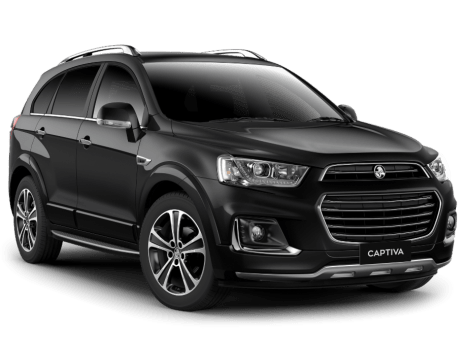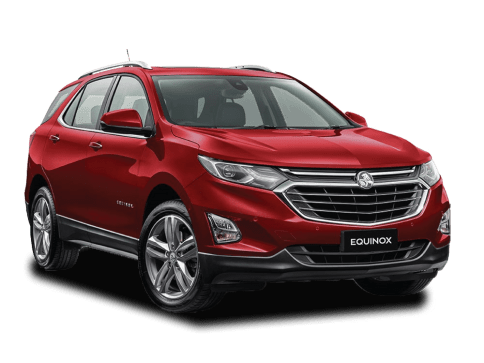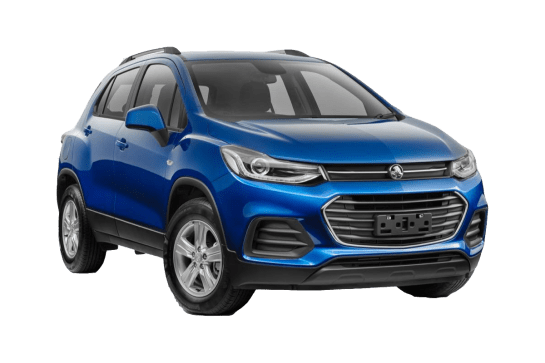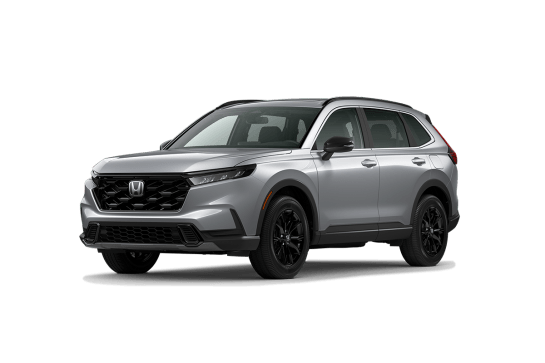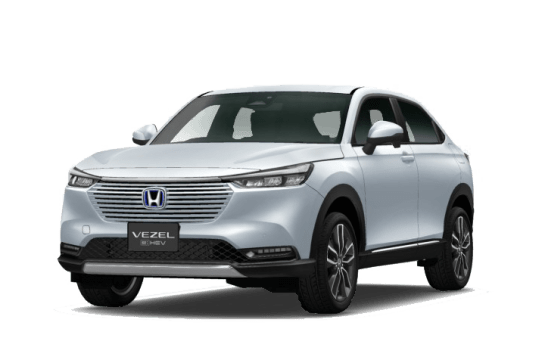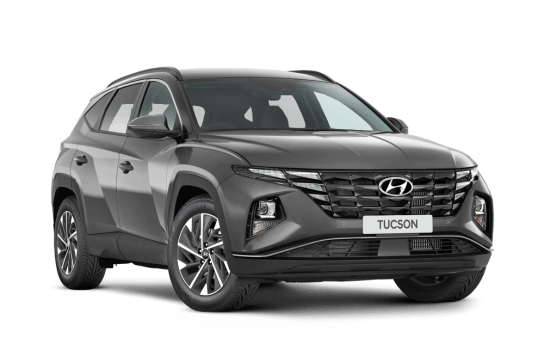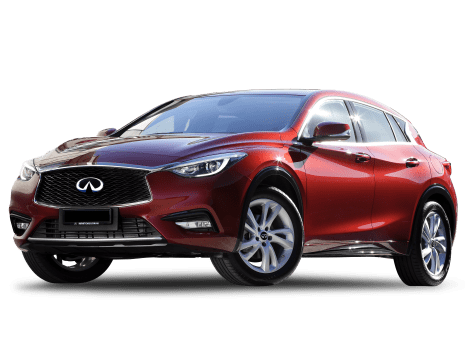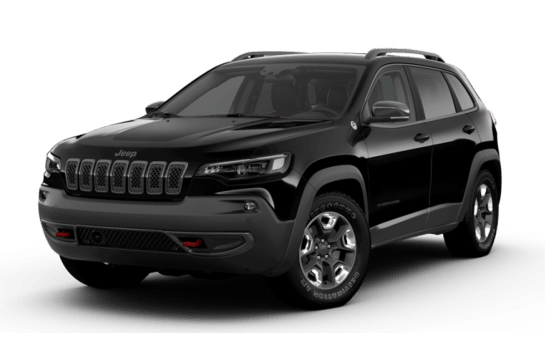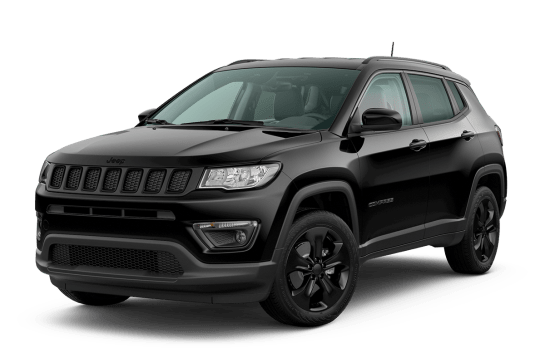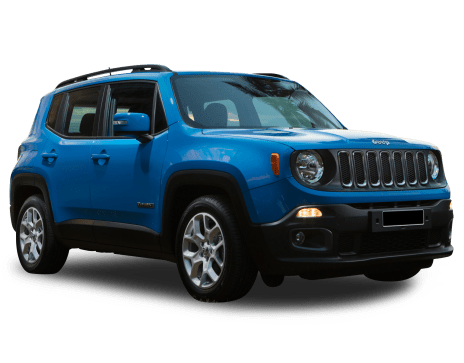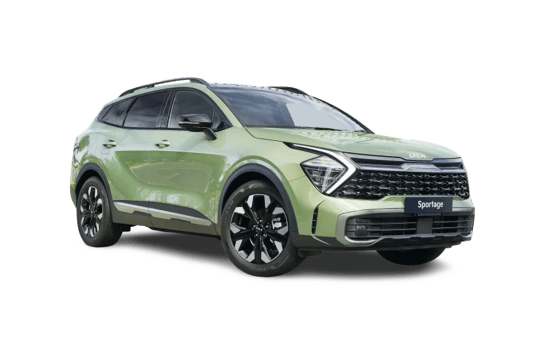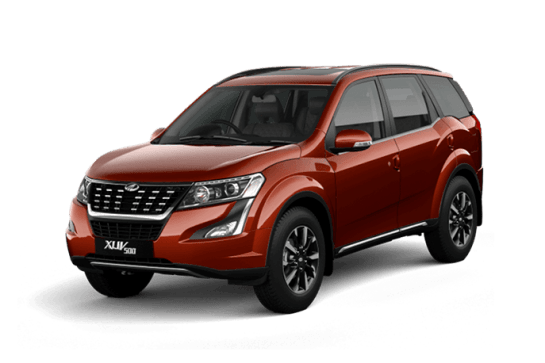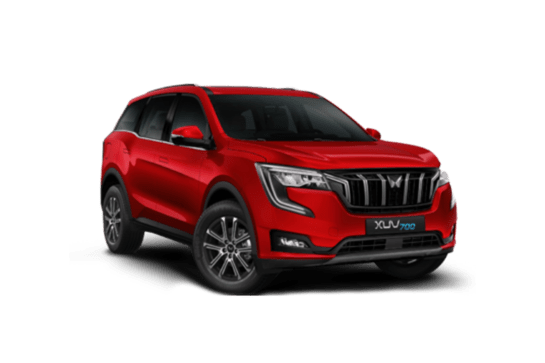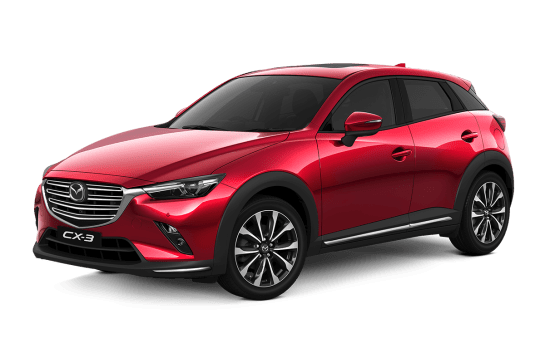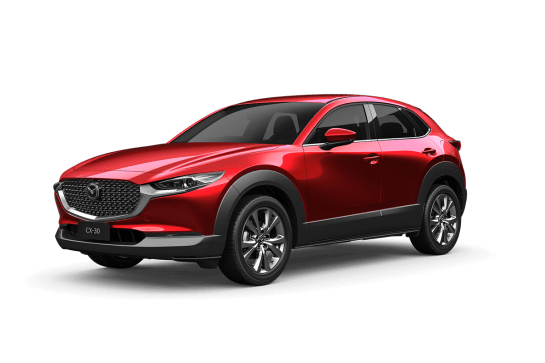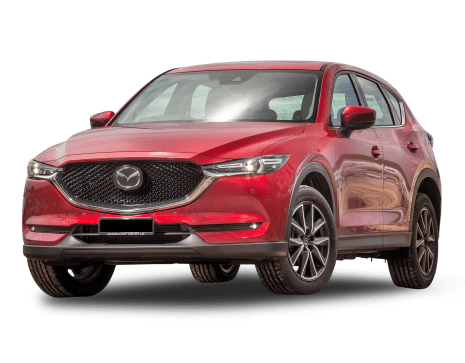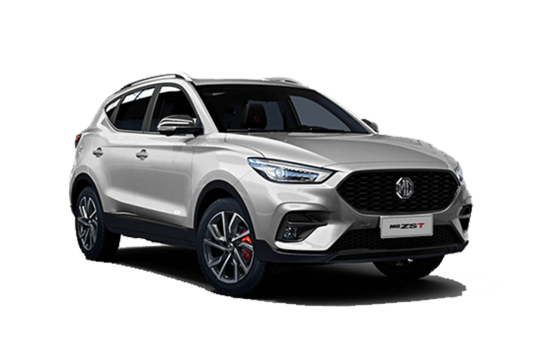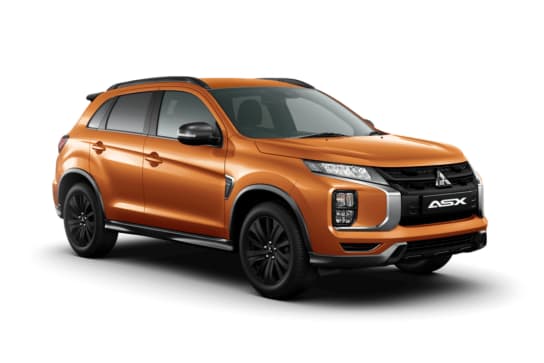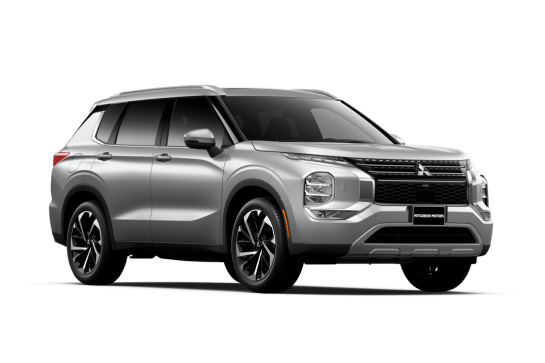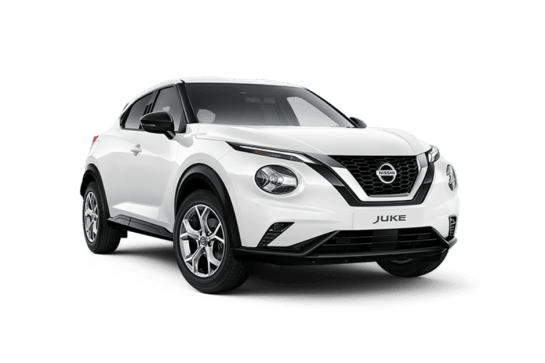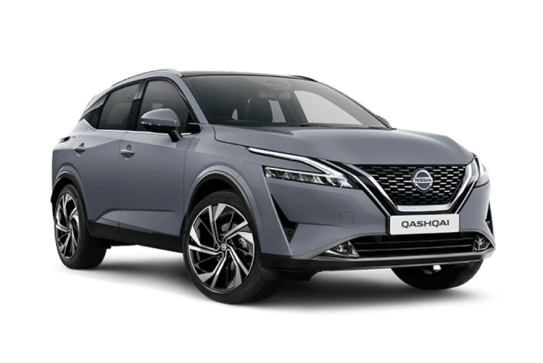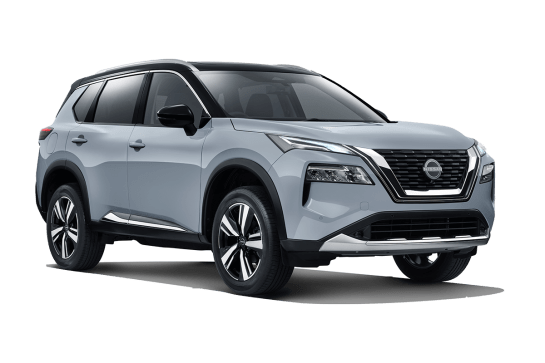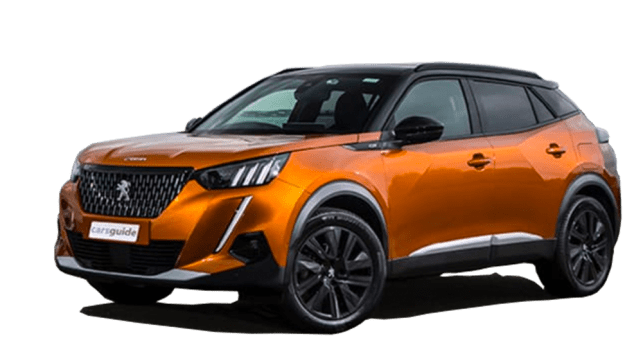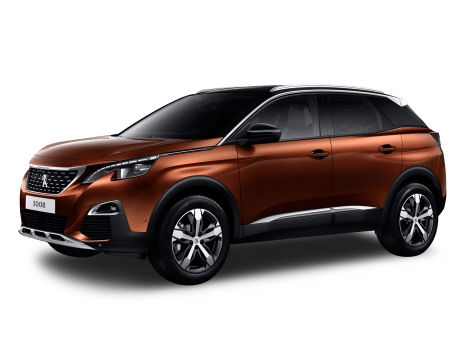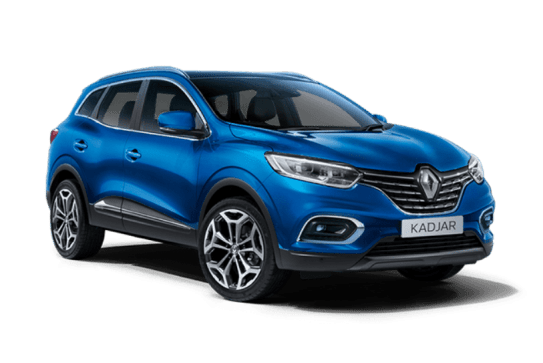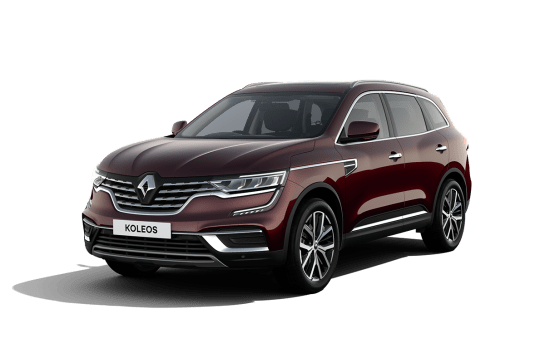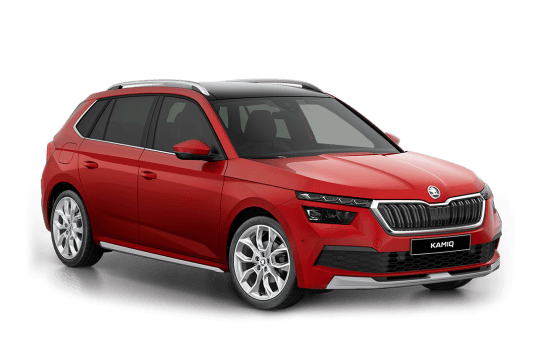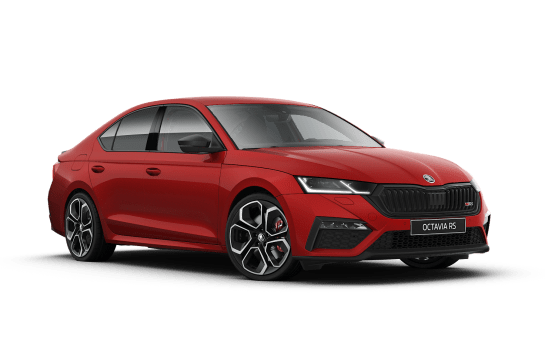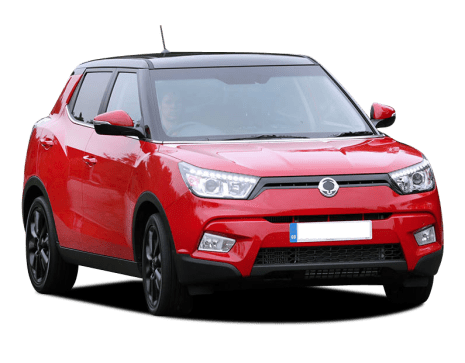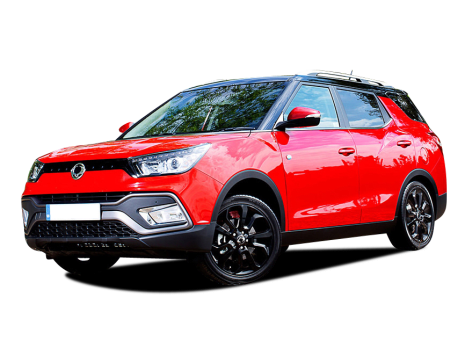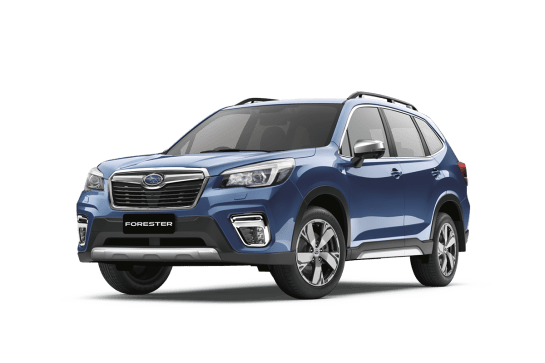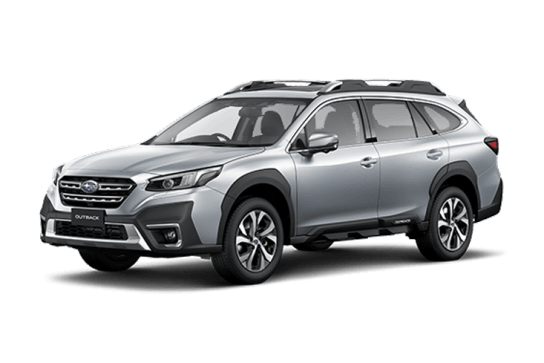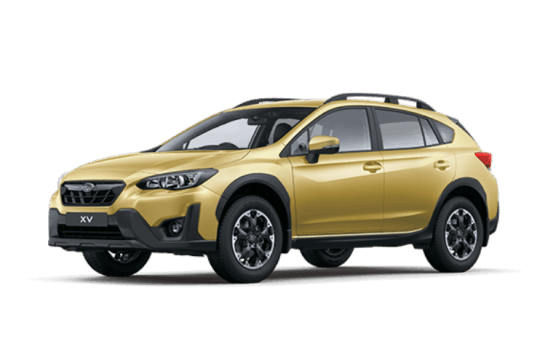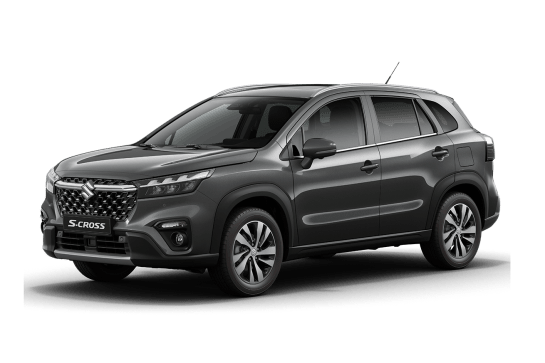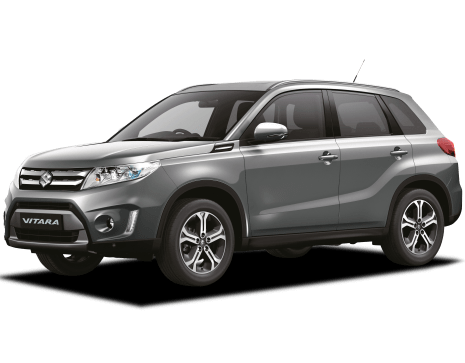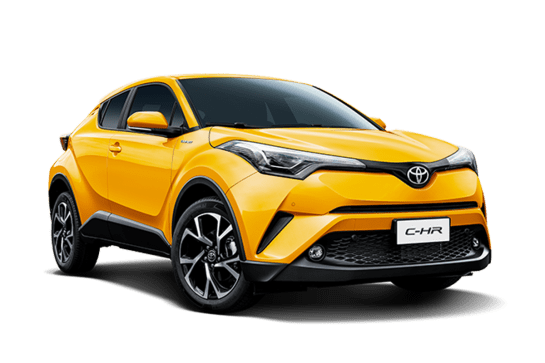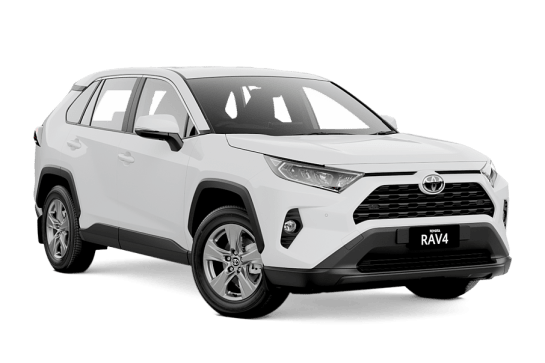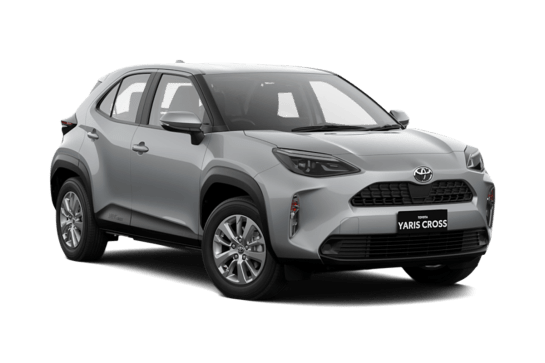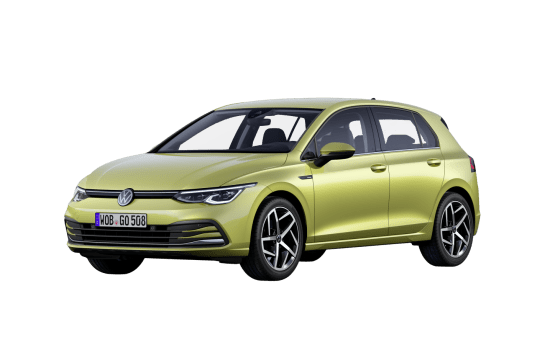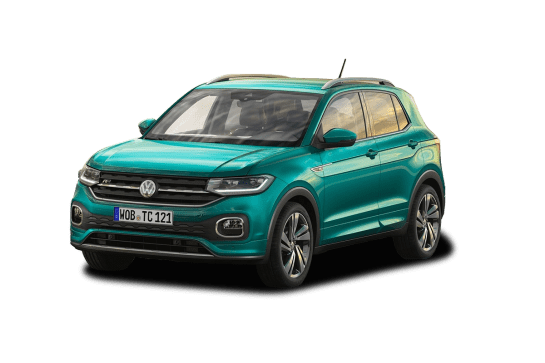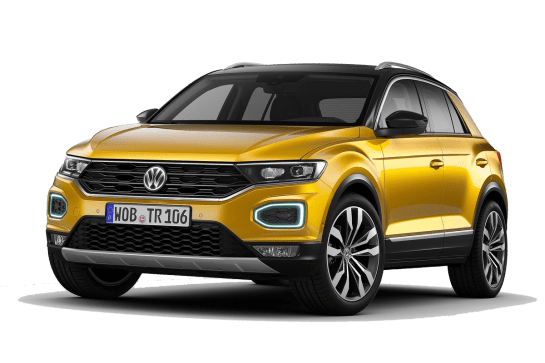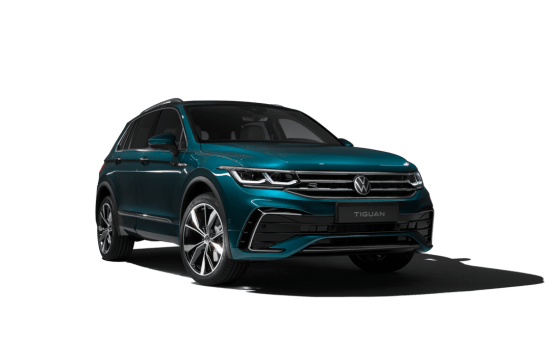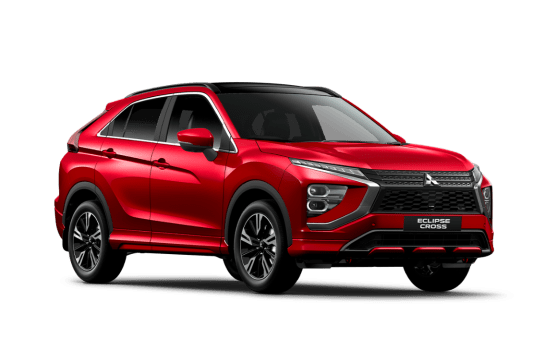
Mitsubishi Eclipse Cross VS Jeep Wrangler
Mitsubishi Eclipse Cross
Likes
- Smooth between petrol and EV
- About 50km of real-world electric driving possible
- Three different trim levels available
Dislikes
- Too expensive for what you get
- Smaller boot and back seat than non-PHEV models
- Poor human-machine interaction
Jeep Wrangler
Likes
- Fun to drive
- Very capable off-road
- New engine well suited to Rubicon
Dislikes
- Cramped interior
- Noisy when pressured
- Driving it can be tiring
Summary
Mitsubishi Eclipse Cross
The 2022 Mitsubishi Eclipse Cross has a new high-tech powertrain that allows it to run as an electric car, or run using the petrol engine, or even use both at the same time.
But the new hybrid SUV is not like a Toyota hybrid - because this one can be plugged in at home to recharge the batteries, and you should be able to get at least 50 kilometres of EV driving out of just a few dollars worth of electricity.
We’re talking about the new 2022 Mitsubishi Eclipse Cross Plug-in Hybrid EV, or PHEV as we’ve called it in the past. The brand has renamed it to include both ‘Hybrid’ and ‘EV’ in the name because, well, it reckons those terms have a bit more cut-through today than when the company first launched its Outlander PHEV back in 2014.
But with the new Eclipse Cross PHEV variants attracting a huge premium over the regular petrol-turbo models, does the extra money buy you a better car? Let’s find out.
| Safety rating | |
|---|---|
| Engine Type | 2.4L |
| Fuel Type | — |
| Fuel Efficiency | 1.9L/100km |
| Seating | 5 seats |
Jeep Wrangler
The two-door Jeep Wrangler Rubicon exists for a very specific reason: to have a lot of fun off-roading on terrain few other standard 4WDs are able to tackle.
Along with vehicles such as Suzuki’s Jimny and Toyota’s LandCruiser 70 Series, the short-wheelbase Rubicon exists within a thin market niche within a niche. This is a purpose-built hard-core body-on-frame 4WD with very few, if any, concessions to comfort, safety or even common sense.
But there big news is that it’s been updated: less power, more torque with a 2.0-litre four-cylinder turbo-petrol engine replacing the beloved V6 petrol, a damage- and scratch-resistant Gorilla Glass windscreen, a 12.3-inch touchscreen multimedia system, Nappa leather seats and a forward-facing Trailcam.
So, is this new-engined shorty Rubicon in updated form your ticket to dirty fun?
Read on.
Read more about
- Massive $25,000 price cut for 4x4 ute! Jeep Gladiator prices slashed before facelifted version of alternative Ford Ranger, Toyota HiLux and Mitsubishi Triton rival arrives
- Jeep Cherokee replacement coming within a year: CEO leaves little doubt when hinting at incoming "mainstream" mid-size SUV to rival Toyota RAV4 and GWM Haval H6
- Major brand's cheap new EV locked in: 2027 Jeep Renegade electric car to undercut the MG4, BYD, Dolphin and GWM Ora
| Safety rating | |
|---|---|
| Engine Type | 2.0L |
| Fuel Type | — |
| Fuel Efficiency | 9.9L/100km |
| Seating | 4 seats |
Verdict
Mitsubishi Eclipse Cross7.4/10
The Mitsubishi Eclipse Cross Plug-in Hybrid EV is an interesting inclusion for the brand, especially as it is typically considered a ‘value player’ in the market.
But with negligible real-world fuel consumption benefits if you drive beyond the limited EV range and a high price premium over the non-PHEV models, it’s important you see if the sums add up for your particular needs.
Primarily going to use the car for running around town? Cool. Think the 50-ish-kay EV range will work for you and make you happy? Amazing. Sold on the look of the car? Hat tipped.
But let me say this - if you are considering the Eclipse Cross PHEV, there are some alternatives you should also have on your list, including the MG HS PHEV, the Hyundai Ioniq PHEV, Kia Niro PHEV, and - the one I’d buy - a Toyota RAV4 Hybrid. For me, plug-in hybrid tech is a bit of a halfway house, in most instances offering too high a price premium for the range you’re getting to drive electric. Heck, a Kona Electric isn’t much more than the top-spec Exceed PHEV, and I’d have that if I wanted a real day-to-day EV experience.
Jeep Wrangler/10
The Jeep Wrangler Rubicon is a hardcore purpose-built 4WD with very few concessions to comfort, safety and common sense.
And that’s a good thing, especially in an increasingly cosseted world.
The two-door short-wheelbase Rubicon is a near-perfect off-road machine: short low-range gearing, mud terrain tyres, front and rear diff locks, and swaybar-disconnect, all combine to make the Rubicon a ready-to-go 4WD weapon.
If you’re shaking your head in disappointment at the Rubicon’s unpredictable on-road manners, lack of refinement and three-star ANCAP safety rating, then you’re missing the point entirely: it’s truckloads of fun.
But the reasons it’s so much fun are also the reasons some people might not like to live with the short-wheelbase Rubicon day to day: it’s a dialled-in driving experience that’s equal parts engaging and exhausting.
It mightn’t make much sense – if any at all – as a daily driver, but if you’re after pure real-world 4WD capability and truckloads of fun then you can’t ignore the two-door version of the Rubicon.
Design
Mitsubishi Eclipse Cross
You’re going to be able to tell the PHEV model from its more conventional counterparts by those oversized ‘Plug-in Hybrid EV’ badges on the front doors, and if you want to tell those behind you what you’re driving, there’s also a ‘PHEV’ badge there, too. Wait, wasn’t the plan to do away with the term ‘PHEV’, Mitsubishi?
But aside from that, the outside features just the different 18-inch alloy wheels (which are the same on all PHEV models, no matter the cost - I think that’s a bit lame, because if I’m spending $7500 on the Exceed I’d like a different wheel design!). Oh, and the Aspire and Exceed get that different lower front splitter, too.
Plus the PHEV has two fuel filler doors - one on each side of the car over the rear wheels. The driver’s side one is the EV charging ports (x2 - detailed below), and the passenger’s side one is for the petrol. Note: while the EV port is push-openable, the petrol cap still requires you to lift a lever in the driver’s footwell.
It may be categorised a small SUV but at 4545mm long, riding on a 2670mm wheelbase, 1805mm wide and 1685mm tall, it’s big for its boots. The popular Mazda CX-5 is only 5mm longer, and it plays in the midsize SUV segment!
Inside there are some design differences, with a specific gear joystick-style selector, and a different instrument panel.
It is impressive how the brand has managed to shoehorn a petrol engine, two electric motors, a battery pack and more into the car, but there are some practicality implications. Read about them in the next section.
Jeep Wrangler
The two-door Rubicon is 4334mm long (with a 2459mm wheelbase), 1894mm wide and 1879mm high.
The classic look has, for better or worse, remained essentially the same as it has for decades – blocky, straight up and down with big wheel arches … distinctive – but some minor tweaks have been introduced into the design mix this time.
The brand’s seven-slot grille now has metallic-look trim around each slot and bigger mesh inserts, marginally softer lines about the exterior here and there, and the cabin has a more modern feel to it than previous examples did.
Speaking of the cabin, the Wrangler Rubicon has low-key stylish trim boosted by Nappa leather and red stitching and its distinctive roll-over cage and removable roof.
The Rubicon has a striking appearance – like it or loathe it – and while few other new standard 4WDs grab the attention of everyone, this Jeep does just that.
Practicality
Mitsubishi Eclipse Cross
Up front, the cabin is a pretty smart place, with nice enough materials and finishes, and a few good storage options. There’s a cubby in front of the shifter, but oddly enough it doesn’t have a wireless charger (there are 2x USB 2.0 ports above) and isn’t quite big enough for a smartphone (even the smaller ones don’t fit there all that easily), and there are cup holders between the seats, a decent covered centre console bin, and door pockets large enough for bottles.
The PHEV models get a different instrument cluster dial for EV driving readout info, but all have the old-school 4.2-inch TFT colour display that lacks the size and usability of some rivals with larger info screens - the MG HS PHEV, for instance, has a 12.3-inch digital display, which shows you a lot more info than this tiny little screen does. Heck, there’s not even a digital speedometer in there - and you only get one if you buy the Exceed model, which has a head-up display (HUD).
That’s part of the problem with the way this car’s interface operates. If you want the most detailed information you need to use the touchscreen media system, but that negates the usability of the media functions. On multiple occasions I found myself switching between Apple CarPlay phone calls and searching for that particular driving info screen I found most useful (there are about 15 screens to choose from, and plenty of them are hard to decipher).
It’s a huge disappointment for a customer who might want to see all that detailed information but also listen to a podcast, answer a call, follow their phone’s mapping or just have anything other than the hybrid info come up on the infotainment screen. The screen itself - an 8.0-inch unit, with sat nav integrated into the top spec only - is fine, but small compared to today’s rivals.
In the back seat, there’s a compromise for cabin space. The leg room is good, but the seat has been bumped up to accommodate some of the electrical hardware and the petrol tank, meaning someone my size (182cm/6’0”) will find they’ve got enough room for their legs but not their head, and those even larger will really need to take care getting in and out. While pre-facelift examples of this car had a clever sliding second row seat, that’s gone. It was never a feature in any PHEV version, and undoubtedly the layout of the battery pack has something to do with that.
The double pane sunroof no doubt eats into the space in the rear to a degree as well, and in the Exceed it likely feels a bit more cramped because of the black headliner.
While three adults could potentially fit across the back row for very short trips, there are dual ISOFIX and three top-tether points for child seats. The Exceed is the one you want if you’re aiming to treat your rear-seat passengers right: it has heated rear outboard seats, rear directional air vents and two USB ports for charging - the ES and Aspire miss out on all that stuff.
Boot space is 359L (VDA) for PHEV models, which is a step down from the 405 litres (VDA) for the non-hybrid models. There is extra hardware under the floor, and you don’t get a spare wheel in the PHEV models either - instead there’s a tyre repair kit. For context, we only just managed to fit all three CarsGuide hard suitcases (124L, 95L and 36L) in the boot of the PHEV version, while it was far less of an issue in the non-PHEV.
Oddly, no model comes with a power tailgate.
Jeep Wrangler
The Rubicon interior has always received well-deserved praise for its durability and suitability for adventure and the outdoors life.
But while it is designed to cop dirt, mud, sand and the general messiness of an action-packed life, the two-door four-seat Rubicon’s interior remains a snug – almost too snug – space. The bulkiness of the roll cage and pillars encroaches on headroom and elsewhere the short-wheelbase Rubicon’s limited physical dimensions impact shoulder, leg, knee and foot room but not to a diabolical degree, especially if you’re a Hobbit like me.
On the plus side though, everything that should feel solid does (like the grab handles), and all dials, knobs and switches are easy to quickly locate and operate while traversing all types of terrain.
Jeep has always applied to the Rubicon quietly clever ideas, such as tensioned net pockets on the doors and in the seat-backs, and deep small-storage spaces with textured, grippy bases.
Upfront there are USB ports – a USB-A and a USB-C upfront, and two USB-A and two USB-C ports in the second row ports – as well as a 230V outlet upfront and in the rear, directional air vents, and cup holders in the centre console.
In terms of packability, this short-wheelbase Rubicon comes up, well, short. There’s not a lot of room inside for people, as mentioned earlier, so throwing extra gear into this Jeep’s cabin is a big ask.
When all four seats are in use, rear cargo space – listed as 365L – is really limited to only copping a few bags for an overnight trip.
Access to the rear is via a side-hinged tailgate, which opens from left to right, and it has a full-sized spare mounted to it.
Price and features
Mitsubishi Eclipse Cross
The 2022 Eclipse Cross PHEV line-up is expensive compared to the petrol-turbo models.
The ES AWD has a list price (all prices MSRP, before on-road costs) of $46,490, while the mid-spec Aspire costs $49,990 and the top-end Exceed lists at $53,990.
I know they’re not like-for-like in every instance - the ES and Aspire petrol-turbo models are 2WD, not AWD, for example, and there are some specification differences, too - but the price jump from each respective non-PHEV version is $15,500 (ES), $14,250 (Aspire) and $12,500 (Exceed).
Yikes.
You’d really, really have to want the EV driving experience to justify that additional expenditure, right?
Here’s a rundown of the specifications across the three PHEV grades.
Standard for the $46,490 ES grade are 18-inch alloy wheels, LED daytime running lights, halogen headlights, keyless entry and push-button start, cloth interior trim, manual front seat adjustment, an 8.0-inch touchscreen media system with Apple CarPlay and Android auto, a reversing camera, a four speaker stereo, digital radio and a rear cargo blind.
Step up to the $49,990 Aspire and you score LED headlights and fog lights, a lower body kit, heated front seats, faux-leather and microsuede trim, auto wipers, adaptive cruise control, an eight-speaker stereo, surround view camera, front and rear parking sensors, and an array of safety equipment that we’ll cover off in the safety section.
Choosing the range-topping $53,990 Exceed model nets you leather seat trim, a heated steering wheel, a head-up display - making it the only grade with a digital speedo! - as well as sat nav, a dual pane sunroof, and a black headliner in the cabin.
Jeep Wrangler
The two-door four-seat Jeep Wrangler is only available in top-spec Rubicon guise. It has a list price of $82,950, excluding on-road costs. This Jeep has no real direct competitor and while its price-tag seems high for a vehicle with such a limited focus, this is a specialised and well-equipped off-roader with a legion of fans who believe it's worth it.
Standard features now include, as per the update, a 12.3-inch touchscreen multimedia system, Nappa leather seats, a forward-facing Trailcam, Gorilla Glass windscreen, 17-inch alloy wheels, and more.
Exterior paint choices include Bright White (standard) or Black, Granite Crystal, Sarge, Firecracker Red, Hydro Blue, Silver Zynith, High Velocity, Earl, Anvil, Tuscadero – all options. Premium paint is $1490.
Under the bonnet
Mitsubishi Eclipse Cross
The plug-in hybrid version runs a non-turbocharged 2.4-litre Atkinson cycle petrol engine producing just 94kW and 199Nm.
Meagre outputs, but the petrol unit is backed by two electric motors - the front motor has outputs of 60kW/137Nm, while the rear motor produces 70kW/195Nm. It’s all controlled by a single-speed transmission.
There is no ‘combined power output’ figure, but there is a 13.8kWh lithium-ion battery pack as part of the equation as well.
The engine can power the battery pack in series hybrid driving mode, so if you want to top up the batteries before you get to a city, you can. And there is regenerative braking, of course. More on recharging in the next section.
Jeep Wrangler
As mentioned earlier, the V6 Pentastar petrol engine has been dropped and replaced by a 2.0-litre four-cylinder turbo-petrol engine – producing 200kW (9kW less than the V6) at 3000-4500rpm and 400Nm (53Nm more than the V6) at 3000-4500rpm – and an eight-speed automatic transmission.
The new combination is a quietly effective teaming; smooth, lively, and punchy, with plenty of torque on tap.
Befitting its rock-crawling status, the Rubicon has a full complement of off-roading mechanicals and driver-assist tech, including on-demand four-wheel drive (with high- and low-range gearing), live axles front and rear, as well as front and rear locking differentials, and a swaybar disconnect.
Efficiency
Mitsubishi Eclipse Cross
The Eclipse Cross PHEV has an official combined cycle fuel consumption figure of 1.9L/100km. That’s astounding, really, but you need to realise that the test calculation is only for the first 100 kays - there’s a really good chance your real-world consumption will be a lot higher, as you can only deplete the battery charge once before calling on the engine (and your petrol tank) to juice it back up.
Electric driving range is stated at 55km based on NEDC cycle testing, while the WLTP rating is a more realistic 45km. In our testing we fell between the two during our “fully charged” 100km run, in which the electric charge initially ran for 50km. But, over the 100km run, the dashboard info screen said the car used “82 per cent” electric driving, while somehow also showing 3.9L/100km for petrol consumption.
I did the numbers at the fuel filler, and the actual return was 4.5L/100km. That’s okay, but not nearly as spectacular as you might hope, and I’ve seen very close in a RAV4 hybrid - which in most instances is cheaper than the Eclipse Cross despite being bigger and, frankly, a lot better.
I also ran the car for a further 100 kays without plugging in, just to see what the ‘worst case scenario’ might be - and it wasn’t too bad, with the fuel consumption jumping to a real-world return of 5.5L/100km. But again, that’s worse than you’ll likely get with a RAV4…
When it comes to charging/recharging, there is available AC charging using a Type 2 plug that can fully recharge the battery in as little as 3.5 hours, according to the brand. DC fast charging with a CHAdeMO plug should fill from zero to 80 per cent in 25 minutes. Maximum charge input is 3.6kW.
Like me, you’ll want to do the maths to see what is going to be the most economical way to run your car - aside from just plugging it in at the office and hoping nobody notices.
A standard 10-amp household plug - which should take about seven hours to replenish the batteries - could cost as little as $1.88 to get back your circa-50km EV range - that’s based on overnight charging, off-peak, on an average 13.6c/kWh electricity price. Of course, if you’re considering a PHEV, you might have a solar array and the electricity could well be free. Good for you.
But remember, there’s more to it than just the electricity costs - you need to also consider the additional purchase budget required just to get into the PHEV model over a regular Eclipse Cross.
Jeep Wrangler
The Wrangler Rubicon has listed fuel consumption of 9.9L/100km on a combined cycle.
On this test I recorded 10.8L/100km between fills, but I did a chunk of low-range 4WDing and the new 2.0-litre four-cylinder turbo-petrol engine was never working hard.
The two-door Rubicon has a 66-litre fuel tank so, going by my on-test fuel figures, you could reasonably expect a driving range of about 610km from a full tank.
Driving
Mitsubishi Eclipse Cross
If you’re after that electric car thrill of near-silent, almost mind-blowing acceleration, the Eclipse Cross mightn’t be the right car for you
But if swift progress and the buzz you get from taking off from the traffic lights without any hesitation at all is more your thing, it could be great for you. And if you’re not quite ready to go “full EV”, then it’s probably something you’re considering.
The EV driving mode is the best driving mode in this car. You can run it just on the petrol engine to ensure you save your battery range, and you might choose to do that when you’re driving on the freeway and know you’re approaching an urban area where the EV goodness will be better used. Or you could have it so it's using battery and petrol power, and that’s where you’ll get maximum combined performance.
But running the car in the default, EV-prioritised mode means you will make the best of this powertrain's strengths, because - for the fifty odd kays you’ll get out of the battery - it’s pretty good.
It’s also impressive the way this powertrain dips between petrol engine, battery pack or both at higher speeds. When the battery range had depleted on my test drive, the engine kicked in almost imperceptibly, working to power the car and also generate more electricity for the battery pack. It then dipped out of petrol, back to battery, and so on and so forth, multiple times during my drive.
The best thing about the way it did so was that it was smooth. There is barely any vibration from the petrol engine, the transmission doesn’t have any gears to fumble with, and overall the refinement is really good.
There are drive modes - Eco, Normal, Snow, Gravel and Tarmac - and in my test I kept to Normal. I did fiddle with the regenerative braking reactiveness, though, using the paddleshifters to dial up or down the aggressiveness of the energy recoup system. It doesn’t feel as aggressive as some pure electric cars, but thankfully it has a decent pedal feel and progression when you apply the brakes yourself.
The steering is light and lacks feel, and doesn’t offer that much engagement or involvement. That might matter to you if you’re like me. I wish it was more fun. But at least it’s easy to park.
While the suspension is fine and comfortable on the highway, it can feel wooden and the ride is quite lumpy at low speeds. It never really feels all that well resolved for urban driving, which is a bit of a downer considering that’s likely where a car like this will spend most of its time
The tune of the suspension - being a bit firm at lower pace - surprisingly doesn’t have any payoff when it comes to cornering, as it lacks a bit of body control, shifting its weight side to side.
All in all it is a decent plug-in hybrid offering – and will be perfectly suitable to someone who wants some EV driving as a part of their lifestyle. It’s just a matter of doing the maths as to whether it will work for you.
Jeep Wrangler
The two-door Rubicon is rather ordinary to drive on sealed surfaces, but it isn’t anywhere near as diabolical as some people would have you believe.
This is a purpose-built off-roader with a wide wheel track and low centre of gravity, so it feels solid on bitumen and dirt in equal measure.
However, you do have to drive it with full focus and give yourself time to get used to some if its more quirky aspects if you aren’t already familiar with them. There is plenty of play in the steering, lots of on-road floatiness and body roll, and this Rubicon – tipping the scales at 1977kg tare weight (listed) and measuring 4334mm long (with a 2459mm wheelbase), 1894mm wide and 1879mm high – can be an unpredictable unit.
You need to micro-manage this shorty 4WD at all times. It’s like driving a go-kart, but more fun and – bonus – it’s street legal.
If you’re steering it, this short-wheelbase Rubicon demands your constant attention – but that’s a fun characteristic I appreciate and that it shares with only a few other vehicles such as the Suzuki Jimny and Toyota LandCruiser 70 Series.
However, as fun as it is, this kind of fully engaged driving experience – requiring laser-focus concentration to keep a vehicle on target – asks a lot of the driver and does become tiring (nay, exhausting) after long stints on the road or off of it.
Beyond that though, this Rubicon, with a track-tight turning circle of 10m, is a nicely manoeuvrable vehicle around town (for swift turnarounds and easy parking) in the suburbs and even along overgrown bush tracks – but more about that soon.
Wrangler fans who have bemoaned the loss of the Pentastar V6 needn’t have worried. The new four-cylinder engine delivers a gutsy punch of acceleration when needed and is nicely matched to the eight-speed auto. It’s also smoother, more refined and less noisy than before.
The solid-axle Rubicon has a suspension set-up – including coil springs at every corner – that soaks up most bumps in the road, and that makes for impressive levels of driver and passenger comfort.
This little purpose-built rock-crawler is solidly built and it can get noisy when you’re inside of it as it rumbles along a road or track – no surprise because it does have a boxy body, big wing mirrors and chunky mud-terrain tyres. Part of the experience, part of the fun, I reckon.
So, how does it go off-road? Bloody well, as usual.
The Rubicon is a genuine 4WD with a dual-range transfer case, a ladder chassis, solid axles, well-established 4WD heritage and its boosted by driver-assist tech. It’s immediately more at home taking on low-speed 4WDing than it is negotiating suburban traffic, shopping centre car parks or city streets.
I’ve driven Rubicons in pretty much every kind of challenging off-road situation – sand, steep rain-slick rocky hills, deep mud holes, swollen water crossings – and they’ve never disappointed.
These Jeeps are some of the few modern-day 4WDs engineered with an off-road focus that offers few concessions to anything other than dirt-track fun – the only vehicles in the same realm are the aforementioned Jimny, 70 Series, and even the likes of the Ford Ranger Raptor and Ineos Grenadier.
Steering in the chopped Rubicon retains a nice weight and feel to it during 4WDing, staying precise as needed, offering the driver a great sense of sustained control through even severe terrain.
Its planted stance gives the Rubicon a distinct composure and its suspension – with a coil spring at each corner – helped it to take the sting out of every dirt-road corrugation on the way to my unofficial 4WD testing and proving ground.
As mentioned earlier, anyone worried about the V6 being dropped should calm down. The new engine is a lively and punchy unit – even livelier than the V6 – and offers up ample smoothly-delivered torque across a wide spread of revs, ideal for high- and low-range 4WDing.
When you switch to 4L and drop the revs, it’s easy to squeeze the most out of this new engine. Considered driving is necessary as is slow and steady throttle, but that's easily achieved in this Rubicon and it was never overworked even when the terrain became very challenging.
This Jeep has a well-calibrated off-road traction control system but if you need even more terrain-grabbing magic, it has front and rear diff locks, and a front sway-bar disconnect system, which helps to unlock even more articulation, and let those tyres stretch to the ground for all-important traction.
The Rubicon also has Selec-Speed Control (an adjustable low-speed cruise control for 4WDing that can be set between 1.0-8.0km/h), and Off-Road+, which adjusts throttle and traction control, among other systems, to best suit the terrain.
What’s also handy about the Rubicon is that, via the off-road pages on the multimedia screen, you can monitor your 4x4 system, as well as vehicle steering angle, pitch and roll, and the status of the diff locks and the swaybar disconnect system.
The two-door Rubicon has a listed 257mm of ground clearance and 760mm wading depth. While I didn’t experience any water crossings that deep this time, I did do plenty of driving on coastal sand, just inland from a beach, and there were deep rutted sections, so I saw clear evidence of its running clearance.
When it comes to approach, departure and ramp-over angles, the higher the number the better and the short-wheelbase Rubicon checks out with listed measurements of 44, 37, 27.8 degrees respectively, and this small 4WD climbs up and over even steep rocky hills with sharp crests, without ever being in danger of scraping the earth with its front, under-carriage or its back end.
The Rubicon rides on BFGoodrich Mud-Terrain KM2 (255/75R17) tyres – real muddies – and those are strapped to 17-inch alloys. These are good tyres and the 17-inch set-up is good for off-roading.
The shorty Rubicon is not a big vehicle and so its Gross Vehicle Mass (GVM, 2404kg) and Gross Combined Mass (GCM, 3751kg) are not massive figures.
It’s not renowned as a towing platform of note but it pays to know that its tongue download is 150kg, towing capacity is 750kg (unbraked) and 1497kg (braked).
Safety
Mitsubishi Eclipse Cross
All Mitsubishi Eclipse Cross models have been awarded a five-star ANCAP crash test safety rating based on 2017 testing for the pre-facelift model.
The range has increasing levels of safety technology the more you spend, but all variants have forward autonomous emergency braking (AEB) with forward collision warning (operates between 5km/h and 80km/h) and the AEB includes pedestrian detection (between 15km/h and 140km/h).
Standard on all grades is a reversing camera, rear parking sensors, seven airbags (dual front, driver’s knee, front side, side curtain for both rows), active Yaw control, stability control, and anti-lock brakes (ABS) with brake force distribution. Lane departure warning is standard too.
Spend up on the Aspire for adaptive cruise control, blind-spot monitoring, rear cross-traffic alert, and front parking sensors. From Aspire up to Exceed, there’s the addition of the brand’s Ultrasonic Misacceleration Mitigation System, which can dull throttle response to prevent potential low speed collisions.
No speed sign recognition is available, and therefore no smart cruise control either. Plus there is no lane centring system fitted either, and nor is there a driver attention monitoring system, so it’s falling behind on the tech front.
The Mitsubishi Eclipse Cross is built in Japan.
Jeep Wrangler
The Jeep Wrangler range has a three-star ANCAP safety rating from testing in 2019.
The rating is not up to scratch in this day and age, but the Rubicon does have onboard a full suite of safety gear including six airbags (two dual-front, two side, two side curtain), as well as auto emergency braking (city and inter-urban) blind spot warning, adaptive cruise control and front and rear parking sensors.
Ownership
Mitsubishi Eclipse Cross
There’s a huge 10 year/200,000 kilometre warranty on offer - but it’s valid if you maintain your car with Mitsubishi’s dedicated dealer service network over the 10 years/200,000km timeline, or else you get a five-year/100,000km plan.
But while the rest of the car will be covered by that decade-long warranty if you service it with Mitsubishi, the battery is only covered for eight years/160,000km, no matter where you have the car serviced.
Maintenance is due every 12 months/15,000km. But just a note - the more complex powertrain means higher service costs than the regular turbo-petrol versions. The annual fees are: $299, $399, $299, $399, $299, $799, $299, $799, $399, $799; so an average cost of $339 for the first five years, or $558.90 per visit over 10 years/150,000kn.
Included for customers who service their car with the brand is four years of roadside assist.
Do you have questions over reliability, issues, concerns, recalls, automatic transmission problems, or anything else of that ilk? Check out our Mitsubishi Eclipse Cross problems page.
Jeep Wrangler
The Wrangler is covered by Jeep's five-year/100,000km warranty – that’s sub-standard compared to the baseline five year/unlimited km warranty.
Service intervals are recommended every 12 months and 12,000km with capped-price servicing set at $399 a pop.
If you have your Rubicon serviced at a Jeep outlet then lifetime roadside assistance is on the cards.


